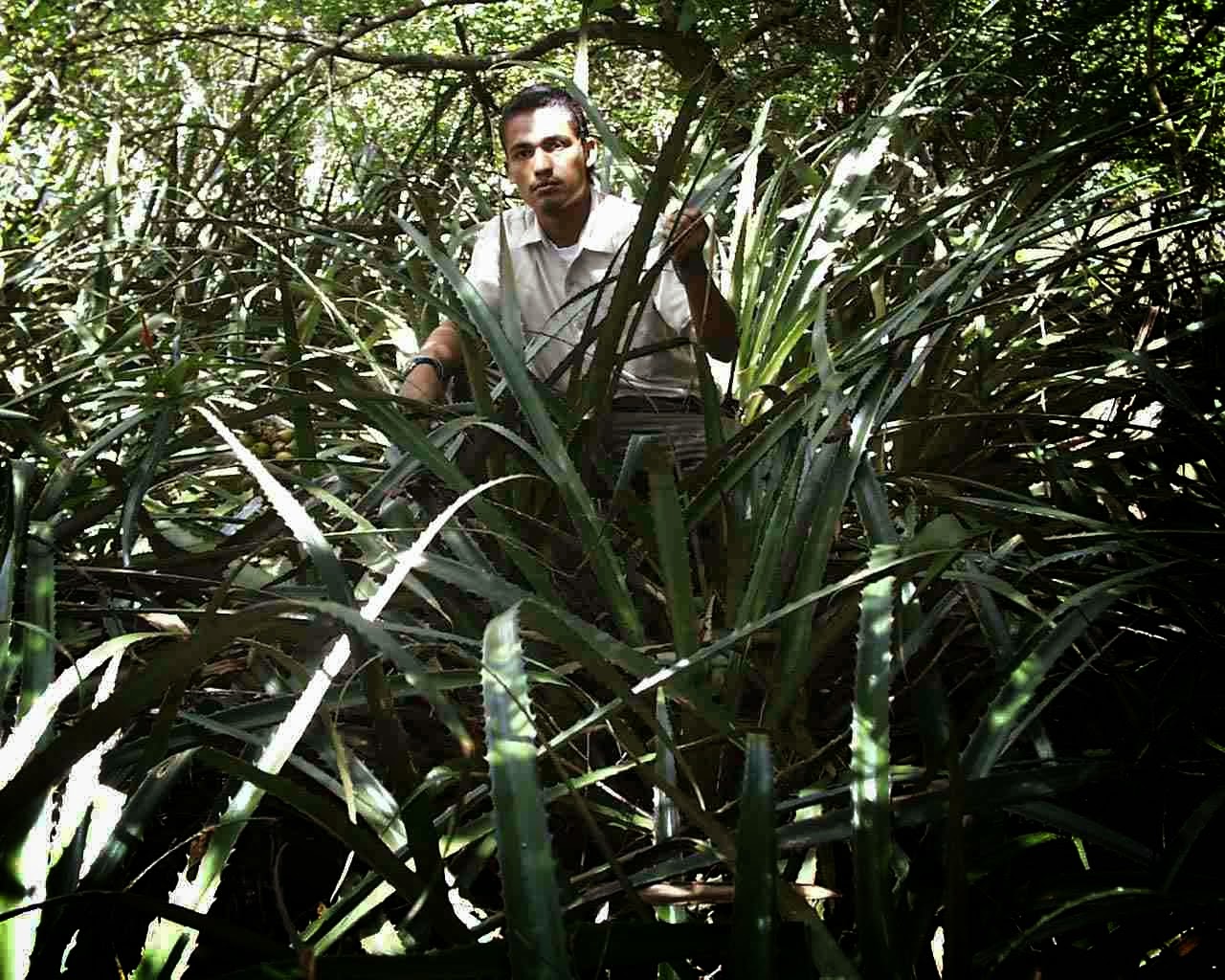The term ‘invasive species’ is most commonly associated with species
which have been introduced to new areas by human activity (such as Eurasian
species in Australia), but also applies to species that have been able to
expand to new areas within their native ranges due to human activity.
Activities such as road building, agriculture and mineral extraction have been
shown to enable some species to expand their ranges in such a way, generally at
the expense of other species.
The Sicklebush, Dichrostachys cinerea is a deciduous, woody Leguminous shrub or small tree native to the
Sahel and Sudan regions of
Africa and the southern part of the Arabian peninsula.
It produces seed pods with a strong smell that are attractive to browsing
animals, which eat the pods and spread the seeds to new areas. When established
in an area it is very hard to get rid of, as it is a tough, thorny woody plant
which produces networks of persistent underground roots from which new plants
can grow, as well as large numbers of seeds which can survive in the soil for
at least five years before germinating. The plant has become established around
boreholes (artificial water-holes) in cattle farming areas in many parts of Africa,
where it modifies the environment, replacing open grassland with a dense
shrubby woodland, which is often then invaded by larger trees excluded from
grassland by grazing animals, eventually resulting in the replacement of the
original grassland with mature forests.
Due to the difficulty of removing Dichrostachys cinerea once it becomes established, efforts to
control the plant currently revolve around the manual collection of seed pods
before they become ripe, in order to prevent the plant from spreading further.
However this is extremely labour intensive and of limited effectiveness, making
gaining a better understanding of the plant in order to establish more
effective methods of controlling it a priority for agricultural scientists in
affected parts of Africa.
In a paper published in the journal Nature Conservation on 8 August
2014, Clarice Mudzengi of the Department of Research and Specialist Services at
the Makoholi Research Institute, Shakkie Kativu of the Department of Biological
Sciences at the University of Zimbabwe, Everson Dahwa, also of the Department
of Research and Specialist Services at the Makoholi Research Institute, XavierPoshiwa of the Department of Animal Science at the University of Zimbabwe and Chrispen Murungweni
of the Department of Animal Production and Technology at the Chinhoyi University of Technology describe the results of a study of the impact of Dichrostachys cinerea on soil chemistry
and herbaceous plant diversity on cattle rangelands on a farm to the north of Masvingo
in eastern Zimbabwe.
The area is located at a mean altitude of 1163 m above sea-level and has a
semi-arid climate, with recorded temperatures ranging from 13.3˚C recorded in
June to 21.8˚C recorded in October. The soil is generally poor in nutrients,
particularly nitrogen, sulphur and phosphorus, being dominated by
granite-derived sandy loams.
Mudzengi et al. found 26
species of grasses and herbaceous plants living in areas that had been
colonized by Dichrostachys cinerea,
compared to 32 species in areas that had not. However this was not just a
simple loss of biodiversity, as eight of the species found in invaded areas
were not found in the uninvaded areas, suggesting that the presence of Dichrostachys cinereawas also
facilitating the spread of these species.
The soil in areas where Dichrostachys cinerea had
become established had raised levels of nitrogen, phosphorous and potassium
compared to uninvaded areas. As a Legume Dichrostachys cinerea is
known to fix nitrogen in the soil, but this is clearly not the only factor present.
Mudzengi et al. suggest that the
raised nutrient levels may be associated with the layer of leaf-litter
established around the deciduous shrubs (which returns nutrients to the soil),
or with competitive exclusion of plants using high levels of nutrients. The
establishment of new Dichrostachys cinerea patches
did not seem to be affected by soil chemistry.
The invasive plants found in Dichrostachys cinerea patches
but not in uninvaded areas are predominantly Grass species typically found on
disturbed ground, and often very tolerant of low nutrient levels. This suggests
that these invasions are facilitated by the exclusion of other plant species
which might otherwise outcompete them, rather than directly due to the
modification of the soil chemistry.
Plants being excluded by the presence of Dichrostachys cinerea may have problems adapting to the altered soil
chemistry, or may be excluded by reduced light levels available beneath the
plants. Dichrostachys cinerea produces
a fairly dense canopy, greatly reducing the amount of light to plants growing
beneath it. In addition it produces a layer of leaf litter, which further
reduces the light available to new seedlings; this is particularly efficient in
excluding plants with small seeds that store little in the way of nutrients and
which need to start photosynthesizing soon after germination (this includes
most herbaceous plants with wind-blown seeds).
See also…
Guavas, Psidium guajava,
are fruit bearing trees in the Myrtle Family, Myrtaceae, closely related to Eucalyptus. They are native to Mexico,
Central America and the Caribbean Islands, but have been introduced to many
countries as a commercial fruit crop, the largest producers being Mexico, India
and Brazil. Like most...
 Arsenic levels in soil around cattle-dipping sites in the Vhembe District of Limpopo Province, South Africa.
Arsenic levels in soil around cattle-dipping sites in the Vhembe District of Limpopo Province, South Africa.The Piñuela, Bromelia pinguin, is a ground dwelling Bromeliad widely farmed in Central America and the Caribbean both for its fruit and its hedge forming ability. It naturally forms dense clumps spiney growth, unusual in rainforests, where finding two plants of the same...
Follow Sciency Thoughts on Facebook.



